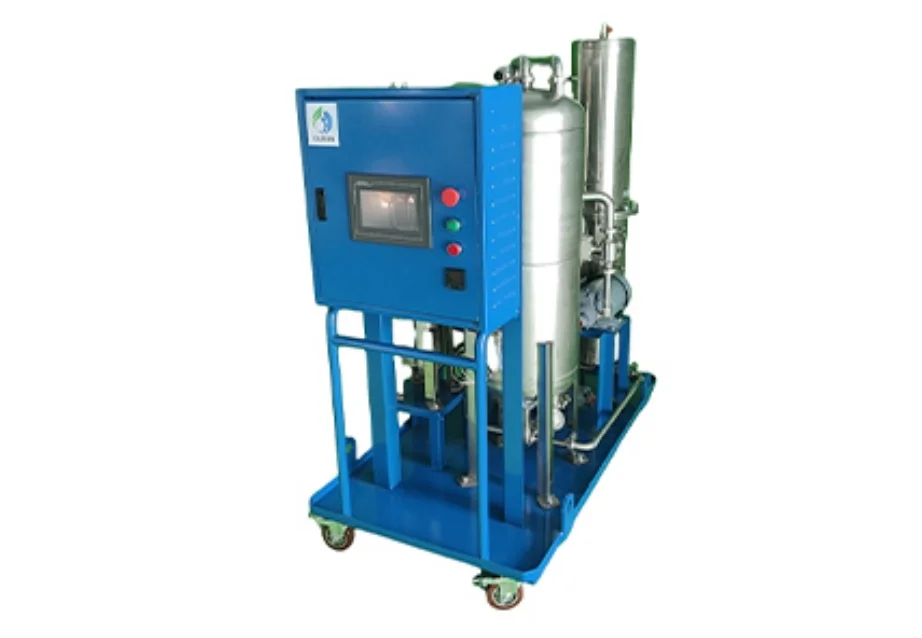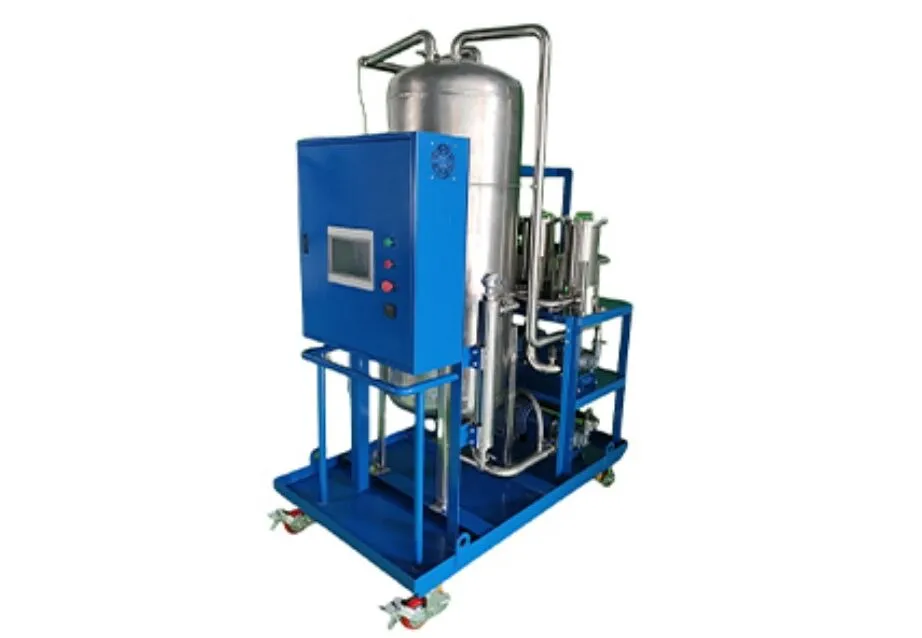Введение
Вы полагаетесь на тяжелые машины каждый день в ваших операциях, будь то’ с питание фабричного пола или сохранение турбин крутится плавно. Когда масла в этих системах загрязняются водой, частицами или газами, всё быстро идет не так - время простоя, ремонт накапливается, а затраты растут. Это’ с где машины для фильтрации масла вступают. Эти устройства очищают изоляционные и смазочные масла прямо у источника, вытачивая примеси, которые могут сократить срок службы оборудования или вызвать сбои. Представьте себе восстановление нефти в новом состоянии, не сбрасывая ее и начиная снова. Вы экономите деньги, сокращаете отходы и поддерживаете производство.

Представьте себе это: команда инженеров, которые живут и дышат очисткой масла, превращая десятилетия опыта работы на местах в машины, которые решают самые сложные задачи. Они сосредоточены на вакуумной технологии, которая удаляет влагу и воздушные пузыри без жестких химических веществ, делая процесс мягким для ваших масел. Их передача обрабатывает все, от трансформаторов, гучащих на подстанциях, до турбин, управляющих электростанциями. Вы получаете компактные блоки, которые подходят в узких пространствах, работают тихо и обрабатывают быстро, часто в два раза быстрее старых моделей. Надежность? Встроенные датчики отслеживают каждый проход, поэтому вы точно знаете, когда ваше масло достигает максимальной чистоты. А поддержка? Они стоят рядом с вами с установкой на месте и быстрыми исправлениями, относясь к вашей настройке как к своей.
Если вы хотите оборудование, которое дает реальные результаты, проверьте OURUNэксперты по разработке инструментов, которые делают обслуживание простым и эффективным. Погрузитесь в то, как работают эти машины, и вы’ Мы увидим, почему они превращают рутинное обслуживание в умные инвестиции. В следующих разделах вы’ Будем следовать потоку от основных принципов к практическим шагам, а также прожекторам на моделях, которые блестят в реальном мире. В конце, вы’ Мы найдем способы применить это в вашем магазине, облегчая те неприятные беспокойства о качестве масла.
Основные принципы фильтрации масла
Вы ежедневно сталкиваетесь с загрязнителями в ваших маслах - грязью от тюленьей, водой от утечок, газами от тепла. Машины для фильтрации масла противодействуют этим угрозам посредством целенаправленных действий. Каждый принцип нацелен на конкретную проблему, создавая слоевую оборону, которая восстанавливает целостность нефти. Начните с механического разделения, перейдите к тепловым процессам и завершите экстракцией газа. Эта последовательность обеспечивает тщательную очистку, не осложняя настройку.
Удаление загрязнителей
Частицы, такие как металлические бритвы или шлам, накапливаются со временем, износя компоненты. Фильтрация начинается здесь с сетевых экранов и картриджей, номинализованных в микронах, часто до 1 микрона для точной работы. Нефть проходит через эти барьеры, оставляя твердые вещества в ловушке. Вы получаете выгоду от поэтапных фильтров: грубые сначала ловят большие куски, тонкие полируют остальные. Это продлевает срок службы картриджа и поддерживает стабильный поток. На практике вы видите, как выходит более чистое масло, готовое к повторному использованию.
Дегидратация
Вода смешивается из конденсации или разлива, образуя эмульсии, которые коррозируют части. Машины используют вакуум для снижения температуры кипения, превращая воду в пар при безопасных температурах около 50-60 ° C. Вы контролируете уровень тепла, чтобы избежать деградации масляных добавок. Пар уходит, конденсируется отдельно и дренируется. Результат? Масла высыхают до влаги менее 10 ppm, защищая от ржавчины и поломов.
Дегазирование
Растворенные газы ослабляют изоляцию и вызывают пенообразование, что приводит к неравномерной производительности. Вакуум освобождает эти газы, часто при давлении ниже 1 мбар. Вы наблюдаете, как пузыри поднимаются и взрываются в камере, а затем выходят через вентиляционные отверстия. Чистое масло восстанавливает свою полную диэлектрическую прочность, жизненно важную для электрических устройств. Эти шаги соединяются беспрепятственно - сначала удаляйте твердые вещества, чтобы облегчить потом притяжение воды и газа.
Поэтапный процесс машины для фильтрации масла
С принципами на месте, машина’ Рабочий процесс превращает теорию в действие. Вы кормите грязное масло в одном конце, извлекаете чистую жидкость из другого. Датчики направляют корректировки, так что вы настраиваете на лету. Эта закрытая система эффективно перерабатывает все, минимизируя разливы или потери. Следуйте по пути, и вы’ Поймите, почему время настройки окупается в длительных сериях.
Вход масла и предварительная фильтрация
Вы подключаете шланги к резервуару или резервуару. Нефть входит с контролируемой скоростью — скажем, 20-100 литров в минуту, в зависимости от модели. Насос тянет его стабильно, избегая кавитации. Впереди фильтр захватывает огромный мусор, как куски уплотнения более 100 микронов. Вы проверяете датчики давления здесь; падает сигнальные заборы, требующие быстрого обмена. Этот этап облегчает нагрузку на основные компоненты, сохраняя весь ход плавным.
Отопление и вакуумная камера
Затем масло попадает в нагреватель - электрические катушки нагревают его равномерно до 40-70 ° C, снижая вязкость для лучшего потока. Вы устанавливаете температуру через панель, соответствующую типу масла. Затем вакуумная камера вступает, эвакуируя воздух, чтобы создать низкое давление. Вода и газы теперь легко кипять. Вы слышите шум насоса, видите стабилизацию уровня. Это сердце процесса длится минуты за цикл, масштабируемый для партийного или непрерывного режима.
Разделение и сбор
Пары направляются к конденсатору, охлаждая обратно в жидкую воду для безопасного стока. Газы вентилируются или захватываются в ловушках. Между тем масло проходит через полирующие фильтры, выбрасывая любые отсталые. Вы наблюдаете через очки для зрения - туманный внутри, кристально чистый. Собранные отходы направляются в свалку для удаления или испытания. Эффективность блестёт: более 95% показателей восстановления означают меньше покупок свежего масла.
Выход и мониторинг
Очищенное масло возвращается в вашу систему или чистый резервуар. Внутренние датчики измеряют количество частиц, содержание воды и кислотность в режиме реального времени, часто отображая уровни ISO 4406 на экране. Вы устанавливаете сигналы тревоги для отсутствия спецификации, останавливая при необходимости. Загрузка журналов для записей, помогающих отслеживать тенденции в течение месяцев. Эта последняя проверка гарантирует, что вы используете только высококачественную жидкость.
Наш’ Инновационные продукты в действии

Машины варьируются в зависимости от работы, но лучшие сочетают вакуумную технологию с умными элементами управления для универсальности. Вы выбираете в зависимости от объема масла и типа загрязнителя - высокие нагрузки воды требуют сильных обезвожителей, тяжелых частиц для тонких фильтров. Эти блоки обрабатывают на месте, сэкономив транспортные трудности. Посмотрите, как две выдающиеся машины справляются с задачами трансформатора и турбины, превосходя основные показатели скорости и мощности.
Вакуумный очиститель трансформаторного масла
Трансформаторы требуют сухого, безгазового масла, чтобы избежать дуги. Это Вакуумный очиститель масла отличается многоступенчатым вакуумом до 0,5 мбар, очищает воду до 5 ppm и газы до следовых уровней. Вы цените возможность установки на прицеп для доступа к подстанции, плюс автоматическое последовательное отслеживание, которое работает без надзора в течение ночи. Проток достигает 50 л/мин, при этом 99% частиц захватываются с помощью накладных картриджей. В полевых испытаниях он возрождает старые масла, увеличивая напряжение разрыва на 20 кВ. Компактный отпечаток подходит для плотных сейфов, а низкая мощность подходит для удаленных объектов. Вы получаете годы жизни трансформатора, избегая дорогостоящих сбоев.
Вакуумный дегидратор турбинного масла
Турбины страдают от лака и пены в смазочных маслах. В Машина фильтрации масла трансформатора- адаптирован для турбин - использует высоковакуумную обезвоживание для удара по 3 ppm воды, плюс коалесцеры для эмульсий. Вы управляете через сенсорный экран, с рецептами для различных вязкостей. Он обрабатывает 100 л/мин, подавляя пену через пенооборотчики и продлевая срок службы масла в 4 раза. Шум остается ниже 70 дБ, идеально подходит для растений. Пользователи сообщают о 30% меньшем накоплении лака, операциях по выглаждению. Мобильные версии переходят в ваш турбинный зал, интегрируясь с существующими линиями.
Эти выборы выделяют вакуум’ край с над центрифугами - более мягкий по отношению к добавкам, более высокая чистота. Вы выбираете по мощности: меньше для лабораторий, больше для флотов. Оба сократили удаление на 80%, соответствуя зеленым регламентам.
Преимущества и лучшие практики
Чистое масло переводится в реальную прибыль в вашей настройке. Вы сокращаете сбои наполовину, растягиваете интервалы между изменениями и сокращаете потребление энергии по мере падения трения. Соблюдение также облегчается - соответствуйте NAS 5 или лучшему для гидравлики. С экологической точки зрения, рекуперация превосходит сброс, сокращение опасных отходов.
Чтобы максимизировать, разместите машину в вентилируемых зонах, подальше от источников тепла. Вы обучаете персонал ежедневным проверкам: замена фильтров каждые 500 часов, вакуумные уплотнения ежегодно. Пара с наборами для анализа масла для базовых линий. Интеграция датчиков в ПЛК для автоматического отключения. Начните с маленького — пилотируете на одной линии, а затем масштабируйте. Эти привычки закрывают в сторонах, превращая фильтрацию в обычные победы.
Заключение
Машины для фильтрации масла демистифицируют обслуживание, позволяя вам восстановить масла и защитные устройства. От входа до выхода процесс обеспечивает чистоту, на которую вы можете рассчитывать, а модели, адаптированные к вашим потребностям, еще больше повышают эффективность. Вы уходите, чтобы выявить возможности в своих операциях, снижая риски и затраты.
Готовы к обновлению? Наши услуги покрыть установки, обучение и круглосуточную помощь. Свяжитесь с нами по электронной почте или посетите наш сайт для общения со специалистами.
Часто задаваемые вопросы
В: Сколько времени занимает типичный цикл фильтрации масла?
Ответ: Циклы длится от 30 минут до 2 часов на партию, в зависимости от объема масла и загрязнения. Непрерывный режим обработки без остановки для более крупных систем.
В: Могут ли эти машины обрабатывать все типы масла?
О: Да, они адаптируются к минеральным, синтетическим или биологическим маслам в трансформаторах, турбинах и гидравлике - просто регулируйте температуру и фильтры.
В: Какое обслуживание мне нужно для самой машины?
A: Еженедельные визуальные проверки, ежеквартальные изменения фильтра и ежегодное обслуживание вакуумного насоса поддерживают его на пике. Мы предлагаем комплекты и гиды.






